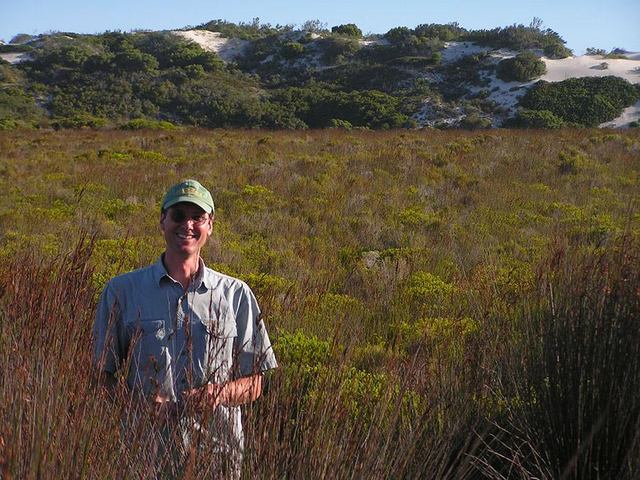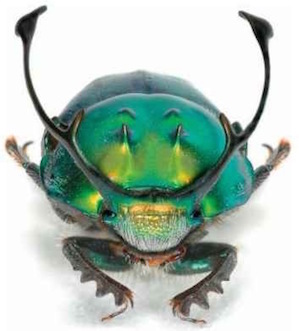| ||||||||||
Dr. Ronald P. Rogers CHIROPRACTOR Support for your body's natural healing capabilities 270-384-5554 Click here for details 


Columbia Gas Dept. GAS LEAK or GAS SMELL Contact Numbers 24 hrs/ 365 days 270-384-2006 or 9-1-1 Call before you dig Visit ColumbiaMagazine's Directory of Churches Addresses, times, phone numbers and more for churches in Adair County Find Great Stuff in ColumbiaMagazine's Classified Ads Antiques, Help Wanted, Autos, Real Estate, Legal Notices, More... 

|
WKU professor tracing the ancestry of dung beetles Click on headline for story with photo(s) Department of Biology, Western Kentucky University BOWLING GREEN, KY - One of the largest and most important groups of dung beetles in the world evolved from a single common ancestor and relationships among the various lineages are now known, according to new research by an entomologist from Western Kentucky University. The study by T. Keith Philips, recently published in the open access journal, Zookeys, is providing important insights into the evolution and diversity of this group of dung beetles, which make up about half of the world's dung beetle species. The two tribes studied, the onthophagines and oniticellines, evolved from a single common ancestor and are found worldwide, except for Antarctica. These dung beetles make up the vast majority of species and dung beetle biomass in many ecosystems, feeding on mammal dung. Often thought of as nature's garbage collectors, the important ecosystem service offered by the dung beetle helps recycle nutrients, reduce parasites, and can even help seeds germinate. Dung beetles are well known to many people because they are colorful species, active in the daytime. Additionally, many species have unusual behaviors, such While the two tribes studied do not have species that create balls, they instead have evolved many other diverse behaviors. This includes species that do not feed on dung but specialize on fungi, carrion, and dead millipedes. Many species that evolved from the same common ancestor even live in close association with termites and ants, where they may be feeding on nest debris. Philips notes, "This is one of the most important groups of dung beetles that finally has a hypothesis on how they evolved and diversified on earth. The evolutionary scenario can now be tested and refined in the future with more data." Although relatively well known, this group still may have as many as 1,000 undiscovered species left for scientists to document. This story was posted on 2016-04-18 11:24:29
Printable: this page is now automatically formatted for printing.
Have comments or corrections for this story? Use our contact form and let us know.
More articles from topic Education:
Adair Co. Middle School SBDM council meets Tue 19 Apr 2016 CHS sophomore Samuel Kessler to attend GSA Build a Book Parent Involvement Activity held at ACPC J-town Mayor, Jockey Pat Day speak at CU/Louisville Link: ACHS Media Arts Pathway on WBKO Midday Live WKU biology professor receives NSF grant to study sleep loss CHS partners with AdvanceKentucky to expand AP course offerings March 2016 Attendance report CES Wings Express students celebrate 7-Habits mastery Academic Team Student Testimonial: Eli Jackson's story View even more articles in topic Education |


|
||||||||
|
| ||||||||||
|
Quick Links to Popular Features
Looking for a story or picture? Try our Photo Archive or our Stories Archive for all the information that's appeared on ColumbiaMagazine.com. | ||||||||||
|
Contact us: Columbia Magazine and columbiamagazine.com are published by Linda Waggener and Pen Waggener, PO Box 906, Columbia, KY 42728. Please use our contact page, or send questions about technical issues with this site to webmaster@columbiamagazine.com. All logos and trademarks used on this site are property of their respective owners. All comments remain the property and responsibility of their posters, all articles and photos remain the property of their creators, and all the rest is copyright 1995-Present by Columbia Magazine. Privacy policy: use of this site requires no sharing of information. Voluntarily shared information may be published and made available to the public on this site and/or stored electronically. Anonymous submissions will be subject to additional verification. Cookies are not required to use our site. However, if you have cookies enabled in your web browser, some of our advertisers may use cookies for interest-based advertising across multiple domains. For more information about third-party advertising, visit the NAI web privacy site.
| ||||||||||






















































